Scapular Stability for Shoulder Mobility
Scapular Upward Rotation
Many athletes that struggle with pressing or pulling overhead are victims of what Shirley Sahrmann calls “Downward-Rotation Syndrome.”
Many athletes that struggle with pressing or pulling overhead are victims of what Shirley Sahrmann calls “Downward-Rotation Syndrome.”
Full range of motion for raising your arms overhead requires sixty-degrees of upward rotation from the shoulder blade. This coordinated movement of the scapula with the arm (glenohumeral rhythm) is what supports the overhead mobility needed for the overhead squat and snatch.
Scapular Upward Rotation = Scapular Stability
When the upward rotators (lower traps, serratus anterior) are weak, the downward rotators become overactive (levator scapular, pec-minor, rhomboid) – acting as stabilizers. Stability is control in the presence of change – active control of the scapula during shoulder flexion (good upward rotation) is a big component of scapular stability.
A stable scapula supports a mobile arm (glenohumeral joint)
This routine releases the downward rotators, while activating the upward rotators.
Releasing the Downward Rotators
The downward rotators of the scapula are pec-minor, levator scapula, and rhomboid. These three muscles tend to be tight and/or overactive – limiting scapular upward rotation.
The downward rotators of the scapula are pec-minor, levator scapula, and rhomboid. These three muscles tend to be tight and/or overactive – limiting scapular upward rotation.
Pec-Minor
Pec-minor is the deep muscle of the chest that is tight on most people – creating an anterior tilt of the scapula and contributing to rounded shoulders. The variations for pec-minor where covered here.
Pec-minor is the deep muscle of the chest that is tight on most people – creating an anterior tilt of the scapula and contributing to rounded shoulders. The variations for pec-minor where covered here.
Levator Scapula
Levator scapula is the often-strained muscle of the neck that is responsible for the trigger points at the top of the scapula – the knot that many athletes complain of to their massage therapist.
Levator scapula is the often-strained muscle of the neck that is responsible for the trigger points at the top of the scapula – the knot that many athletes complain of to their massage therapist.
While levator is often ‘locked-long’ it is important to release the associated fascia of this muscle and prevent it from elevating the shoulder blade during arm movement.
Rhomboid
Rhomboid is the muscle that sits between the shoulder blade and spine. Rhomboid is often tight pulling the scapula in towards the spine. This is one of the most often overlooked stretches.
Rhomboid is the muscle that sits between the shoulder blade and spine. Rhomboid is often tight pulling the scapula in towards the spine. This is one of the most often overlooked stretches.
While it is important to strengthen rhomboid with movements like bent-over rows – if the shoulder blades are pulled in towards the spine, it is important to focus on restoring scapular alignment.
Athletes should refrain from exercises that involve retraction and depression of the shoulder blades (bench-press, rows) and focus on upward rotation – until alignment is improved.
While both rhomboid and serratus anterior both attach to the shoulder blade – they are actually a continuous line of connective tissue that maintains a tug-of-war for normal alignment and scapular function. Below: rhomboid on the left, serratus anterior on the right…
The scapular wall slide activates serratus anterior, while the half-kneeling face-pull strengthens rhomboid in a movement pattern of upward rotation.
The common cue of “Squeeze your shoulder blades together” for improving posture is detrimental to shoulder health.
Thoracic Position & Scapular Stability
Athletes should avoid cues that create rigid postures. Squeezing your shoulder blades together to improve posture is just as futile as “Squeeze your pelvic floor muscles while driving.” Yes, I actually read that somewhere.
Athletes should avoid cues that create rigid postures. Squeezing your shoulder blades together to improve posture is just as futile as “Squeeze your pelvic floor muscles while driving.” Yes, I actually read that somewhere.
Instead, think of lengthening your spine and breathing into your lateral ribcage – let your awareness lead your breath there – don’t force anything. This length in the spine and diaphragmatic breathing is what supports a good spine and ribcage position.
Scapular stability is dependent on good thoracic position. While many athletes need to work on improving thoracic extension, some gym members are ‘stuck in extension’ – physical therapist Shirley Sahrmann refers to this as, “Thoracic Extension Syndrome.”
This is beyond the scope of this blog; just realize that thoracic position is needed for scapular stability. Athletes stuck in extension should check out this amazing blog and see the Eric Cressey forearm wall slide variation video. Eric shows the wall slide with a slight rounding of the thoracic spine to counter extension.
The Diaphragm’s Role in Scapular Stability
While scapular stability is dependent on the function of the upward rotator serratus anterior, serratus anterior function is dependent on thoracic position and diaphragmatic breathing. DNS Practitioner – Hans Lindgren explains,
While scapular stability is dependent on the function of the upward rotator serratus anterior, serratus anterior function is dependent on thoracic position and diaphragmatic breathing. DNS Practitioner – Hans Lindgren explains,
“When asked which muscle is the most important in providing scapular stability I am sure most people would think of the serratus anterior or the mid and lower trapezius. I would probably have done the same before I started to study with Pavel Kolar in the DNS program.
My answer to that question would now be the Diaphragm.”
He goes on to explain that, “The stabilizers of the scapula, as well as all other muscles, need a fixed anchor point to pull towards. That anchor point in this case is the ribcage and the “core” all stabilized by the diaphragmatic contraction.”
In summary: both thoracic position and diaphragmatic breathing are prerequisites for improving scapular stability.
Future blog posts will go into greater detail, the Kolar Wall Bug trains both – see here.
Two Great Shoulder Mobility Exercises
The half-kneeling face pull trains thoracic extension, upward rotation and strengthens the lower and middle trapezius. This is one of the best shoulder exercises for maintaining shoulder health and helping restore overhead mobility.
The half-kneeling face pull trains thoracic extension, upward rotation and strengthens the lower and middle trapezius. This is one of the best shoulder exercises for maintaining shoulder health and helping restore overhead mobility.
The scapular wall slide series was covered here. The forearm wall slide trains upward rotation.
Adding upward rotation exercises to your pressing and pulling programming is a great way to balance your training for strong shoulders.
- Kevin Kula, “The Flexibility Coach” – Creator of FlexibilityRx™
Related Resources
Juggernaut Training: The Scapula and Thoracic Spine – A Classic Love Story (link)
Eric Cressey: Serratus Wall Slide Variations (link)
Mike Robertson: Pushups, Face Pulls, and Shrugs (link)
Hans Lindgren DC (DNS Practitioner): Scapular stabilization (link)
FlexibilityRx™: Rhomboid Stretch (link)
FlexibilityRx™: Levator Scapula Stretch (link)
Juggernaut Training: The Scapula and Thoracic Spine – A Classic Love Story (link)
Eric Cressey: Serratus Wall Slide Variations (link)
Mike Robertson: Pushups, Face Pulls, and Shrugs (link)
Hans Lindgren DC (DNS Practitioner): Scapular stabilization (link)
FlexibilityRx™: Rhomboid Stretch (link)
FlexibilityRx™: Levator Scapula Stretch (link)
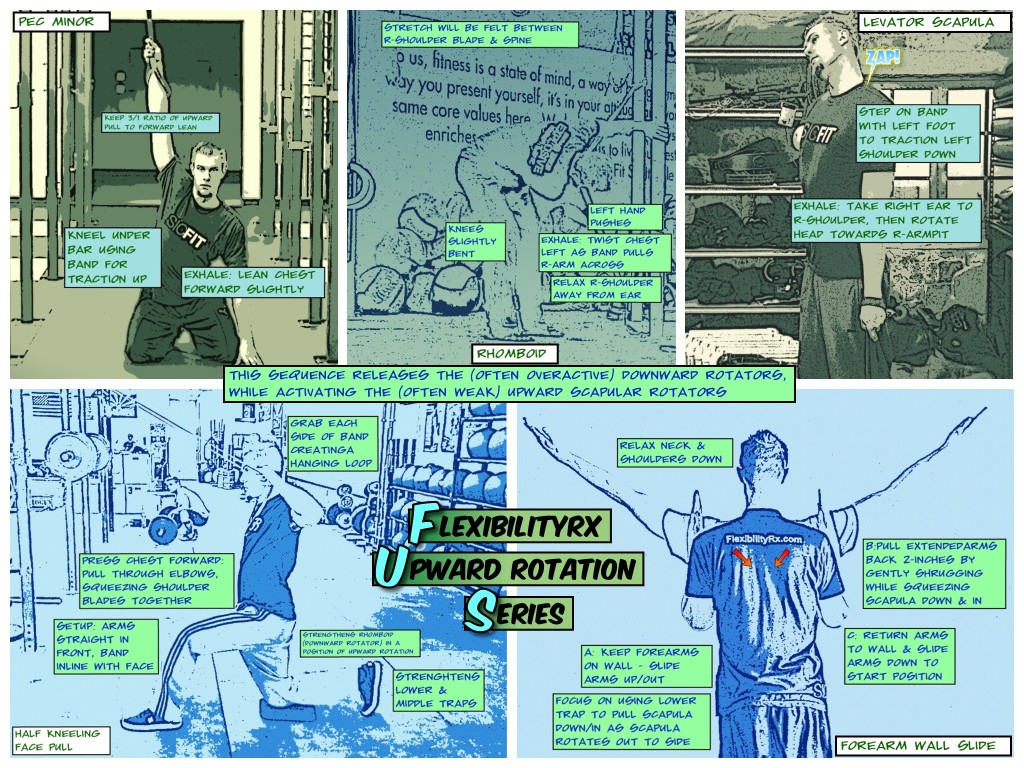
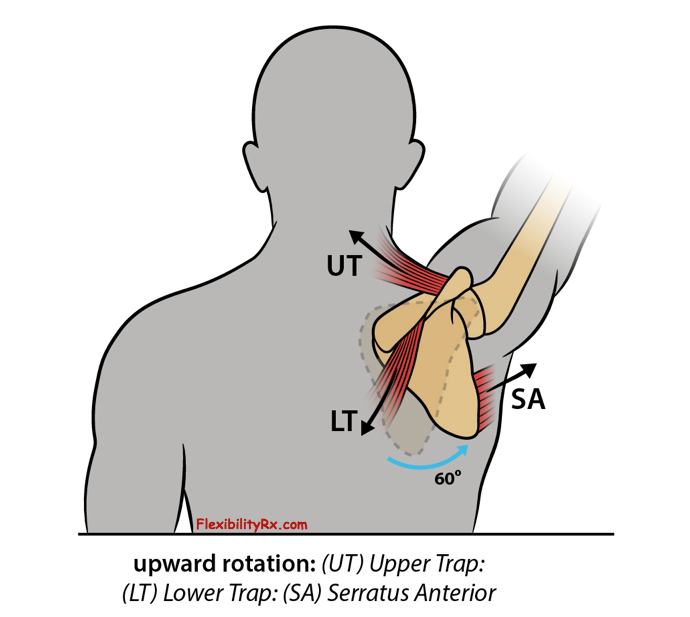
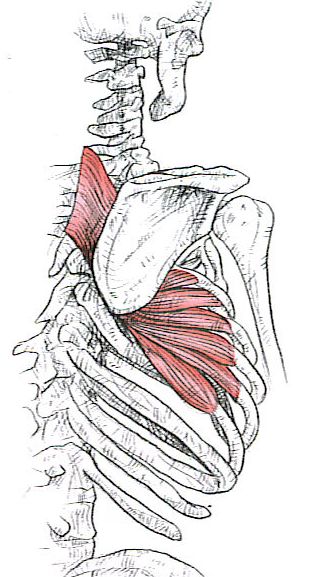
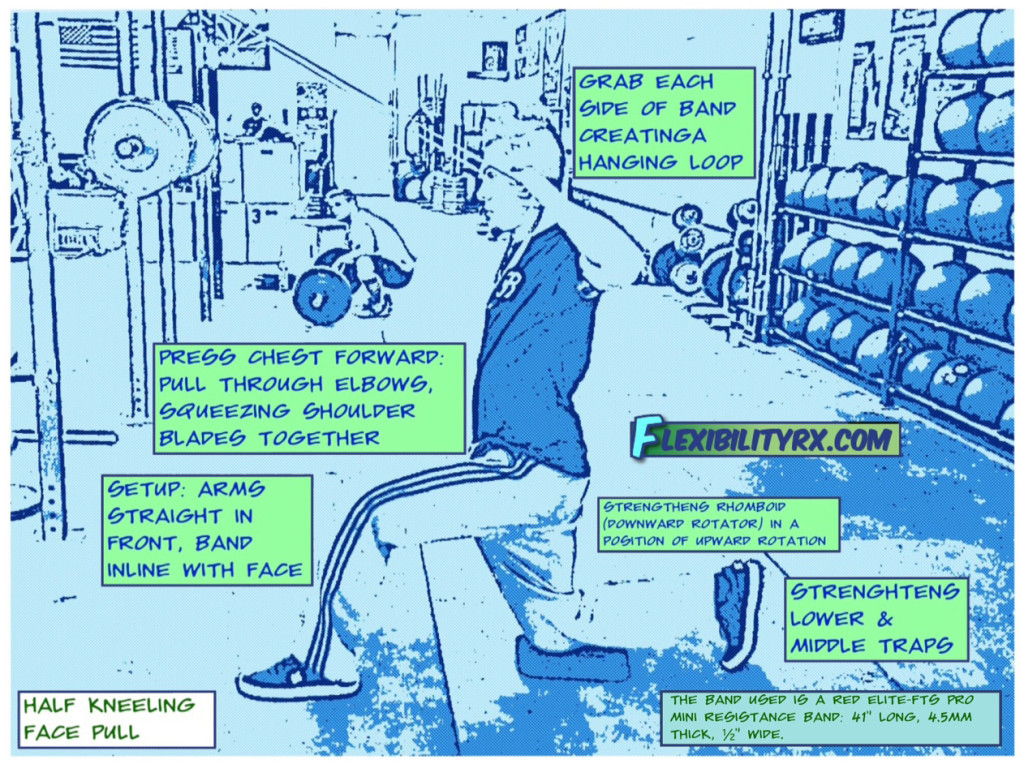
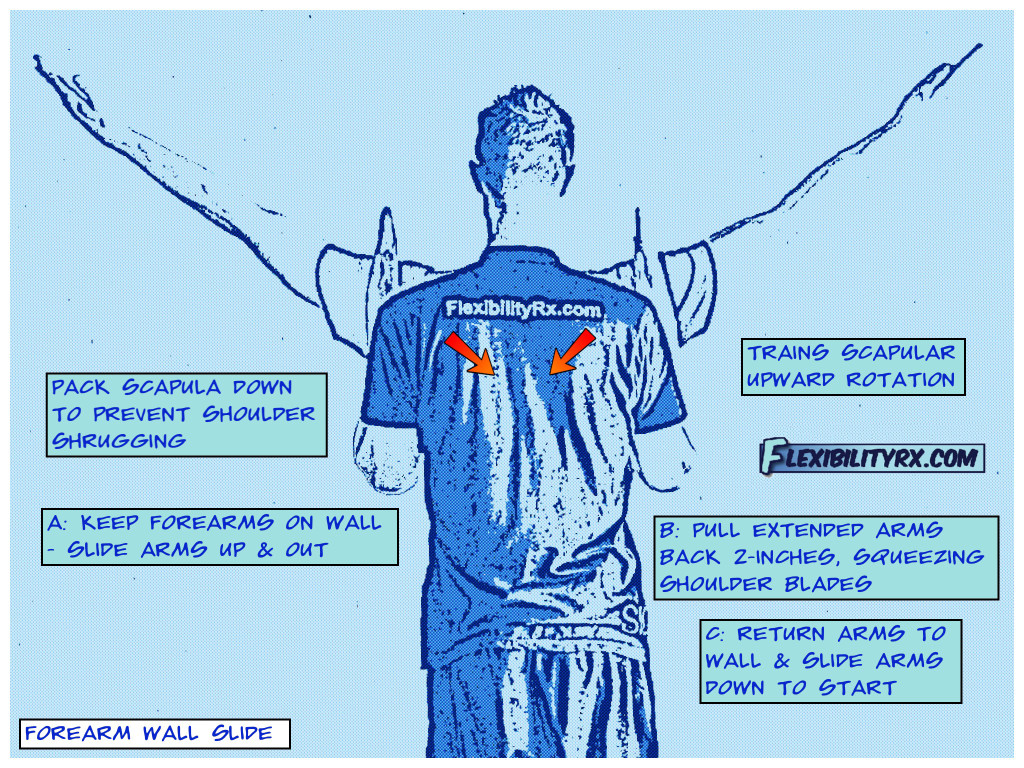
Комментариев нет:
Отправить комментарий